“Children are made readers on the laps of their parents.”
~Emily Buchwald
Reading is personal and if you want your child to connect to a story, they need to enjoy it. Seems like a simple concept, but often times we forget this and guide them toward stories we enjoyed. Although it’s easier with picture books, as children get older they develop an opinion about what they do and do not like to read.
As my two older daughters began their foray into chapter books, I made the repeated mistake of asking them to read books I loved as a child. Sometimes they liked the story but a handful of times they trudged through the book, finishing it just so they could appease their excited mother. I slowly learned it’s imperative to help your child find their preferred book genre, especially if you want them to develop a love for reading.
I have discovered that my two oldest daughters couldn’t be more different when it comes to their book preferences. My thirteen year old Sophie loves fantasy novels and her love for this genre was sparked by the Sisters Grimm Series by Michael Buckley. Another favorite series is The City of Ember by Jeanne DuPrau. As of now, she just completed the Harry Potter and Divergent series and is halfway through The Hunger Games trilogy.
On the other hand, Elsa, who is nine, loves historical fiction. Having homeschooled at the beginning of her chapter book journey (she was in 2nd grade), she developed an interest in WWII, thanks to the book Number the Stars by Lois Lowry. Additionally, she enjoys realistic fiction stories like Tuck Everlasting and Island of the Blue Dolphins. Possibly onto another genre, Elsa just started the mystery book Three Times Lucky by Sheila Turnage. I am curious to see if this is something she will enjoy because lately it’s become hard to find age appropriate WWII novels. 🙂
Once you know what books your child likes, encourage them to read every day. Again, an obvious concept, but sometimes this is easier said than done. I have four kids so believe me, I know the chaos that ensues throughout the day and into the evening that could derail reading time. Even if your child reads a few pages a night, keeping a quicker reading pace will increase engagement in the story and also decreases the chance of book abandonment.
To help add that “extra” touch to your child’s reading, I have included two free resources that I use at home with my girls. For lower elementary use this Graphic Organizer for reading reflection. This activity works best once your child has read a chapter or portion of the story. They make a connection to the text, write a question, list the characters and setting, create a brief summary of events, develop a prediction for what will happen next and lastly, log a new vocabulary word from the reading. After they have completed the sheet, discuss each of the areas.
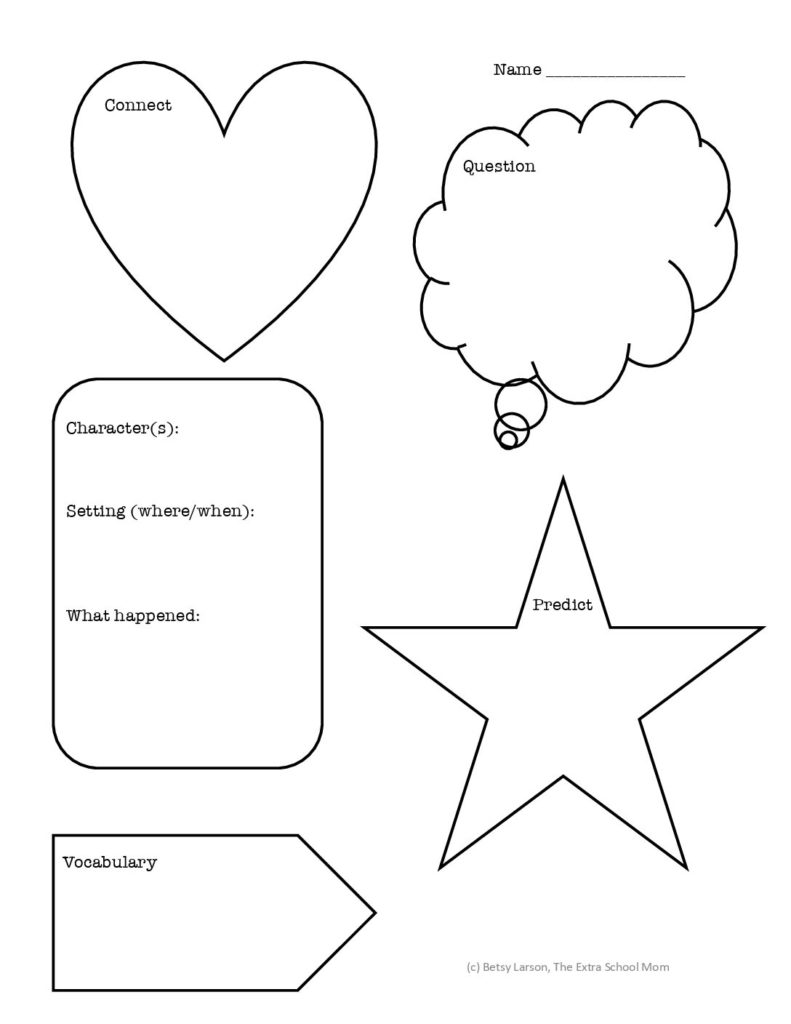
Here is what Elsa came up with after we finished reading a section of Out of the Dust by Karen Hesse, a wonderfully profound story, written in free verse poetry. This book is geared for kids in grades six and onward but a doable read aloud for younger kids with a parent. Did I mention Elsa is interested in WWII?
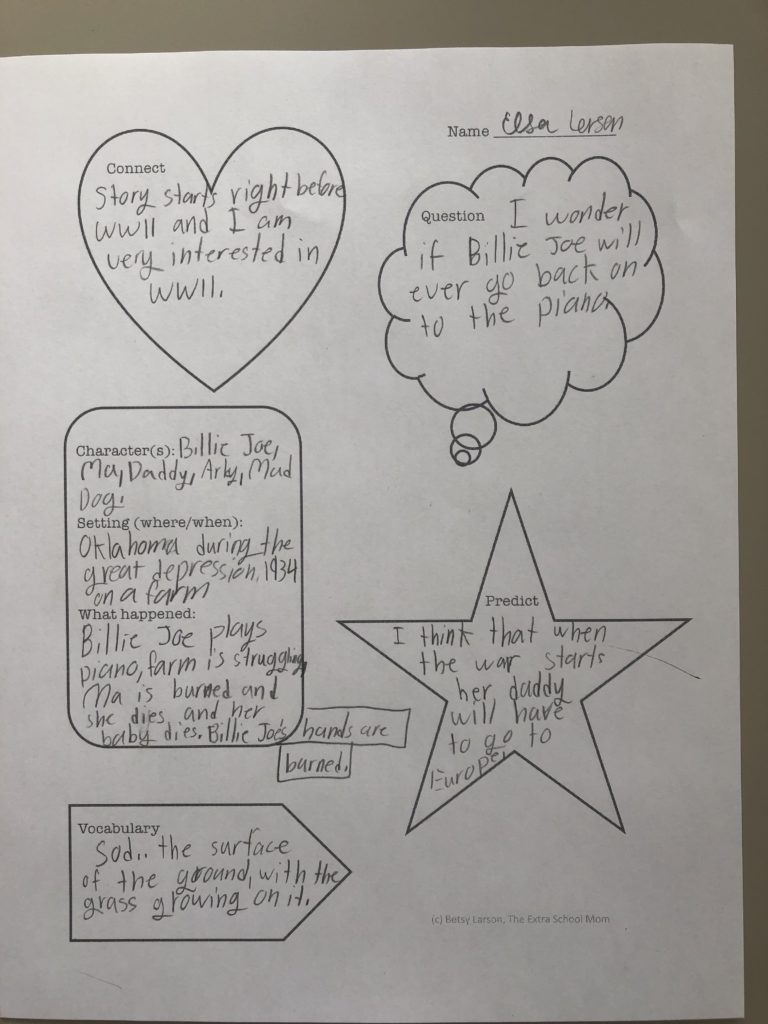
To help with the connection portion of the activity, I have included my Text Connection resource. I find we discuss stories so often that when we read aloud, Elsa is constantly interrupting, saying things like, “This reminds me of…”, or “Wait, this is just like the other book we read…”. As much as I want to keep reading , it makes me happy to see her connecting with a story. I try to remind myself of this, especially on school nights when the kids are still up at 9:00 pm, the house is a mess and I just want to watch some television.
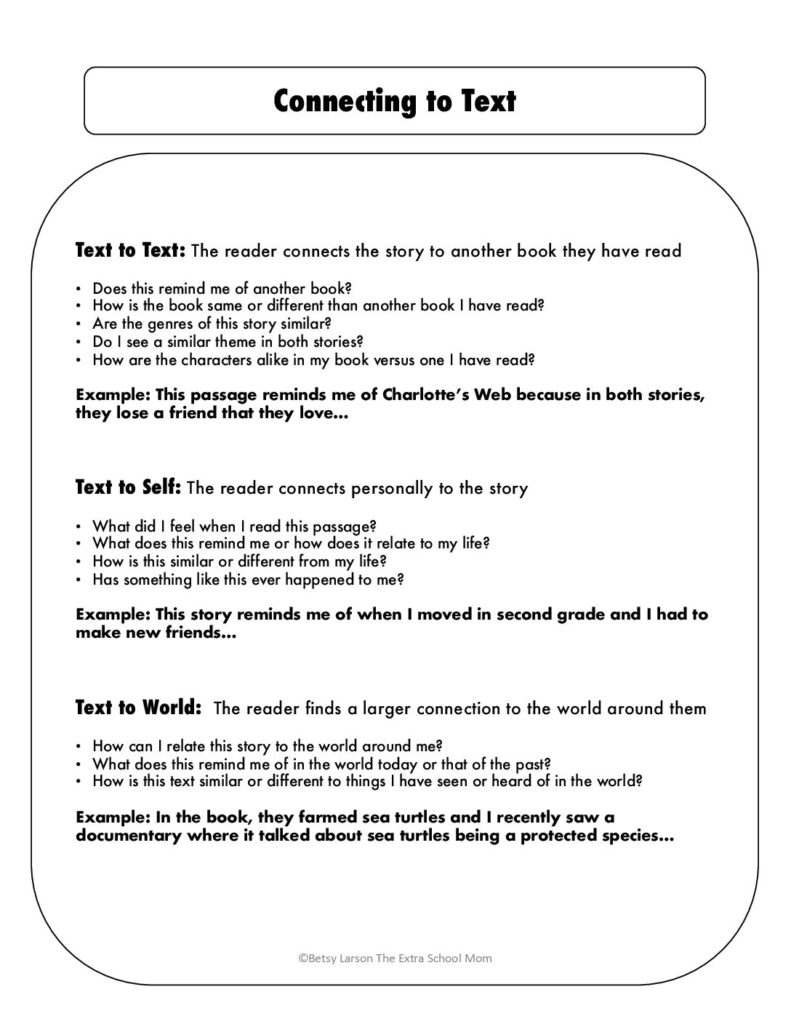
Critical thinking and questioning is key to understanding and analyzing literature and can be adapted to all grade levels, even for early readers. As you read with your young child, throw out some questions and see how they answer. Simple actions like this set the groundwork for understanding literature.
For upper elementary and middle school, use this Plot Chart activity.
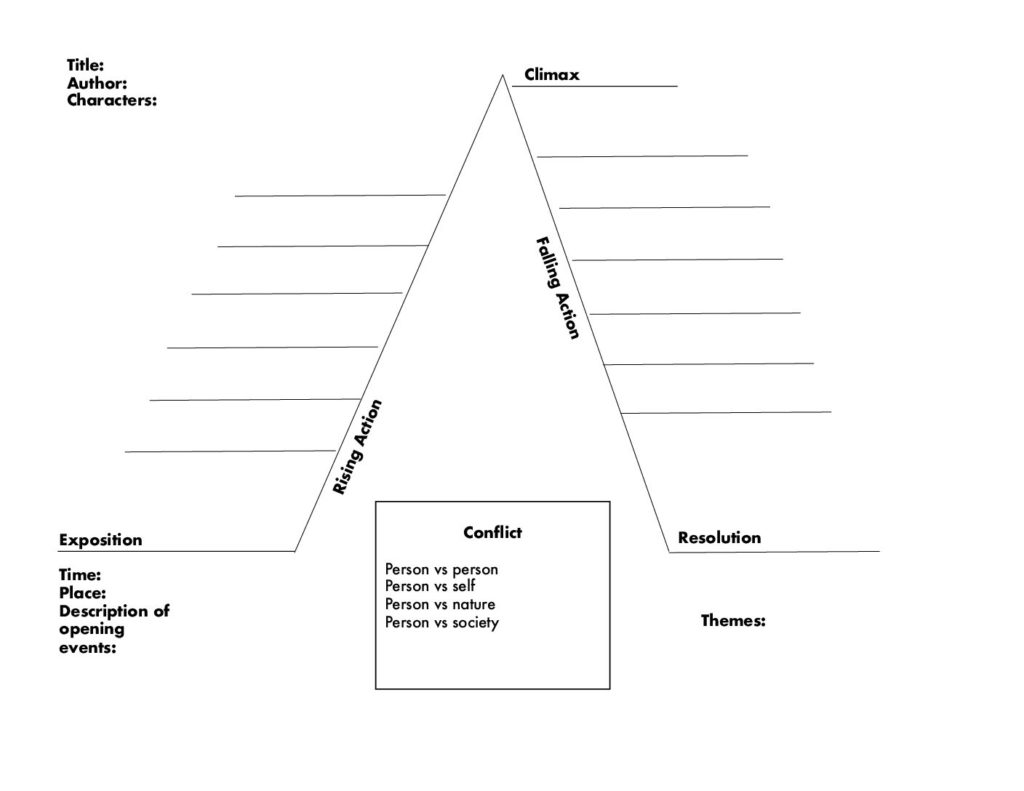
I include the plot chart in every novel unit with my middle schoolers. It’s a simple but effective way to understand the major concepts of plot and story elements. Unlike the other graphic organizer, this one should be filled out as the student reads the story, completing it once the story is read. Most of it is self explanatory but here are some helpful hints:
*Next to each conflict, list the conflict(s) present within the story (not all types of conflict will exist within a novel). Example: If you are reading Harry Potter, Person vs Self could be Harry vs Harry and Person vs Person could be Harry vs Voldemort.
*The rising action are the main events that lead up to the climax.
*The climax is the highest point of action within a story and sometimes referred to as the turning point. Remember, the climax is it’s own event and is NOT part of the rising or falling action.
*The falling action are all the events that occur after the climax that lead to the resolution.
*The resolution is where the main problem is solved and is NOT part of the falling action. Remember, the resolution does not have to be a happy ending; it is merely the final outcome of a story . The resolution is sometimes called the denouement.
*The theme is the underlying message taken from the story. A book may have multiple themes. For example, in Harry Potter we see themes like friendship, hope, and loyalty.
Here is a plot chart I completed for Out of the Dust.
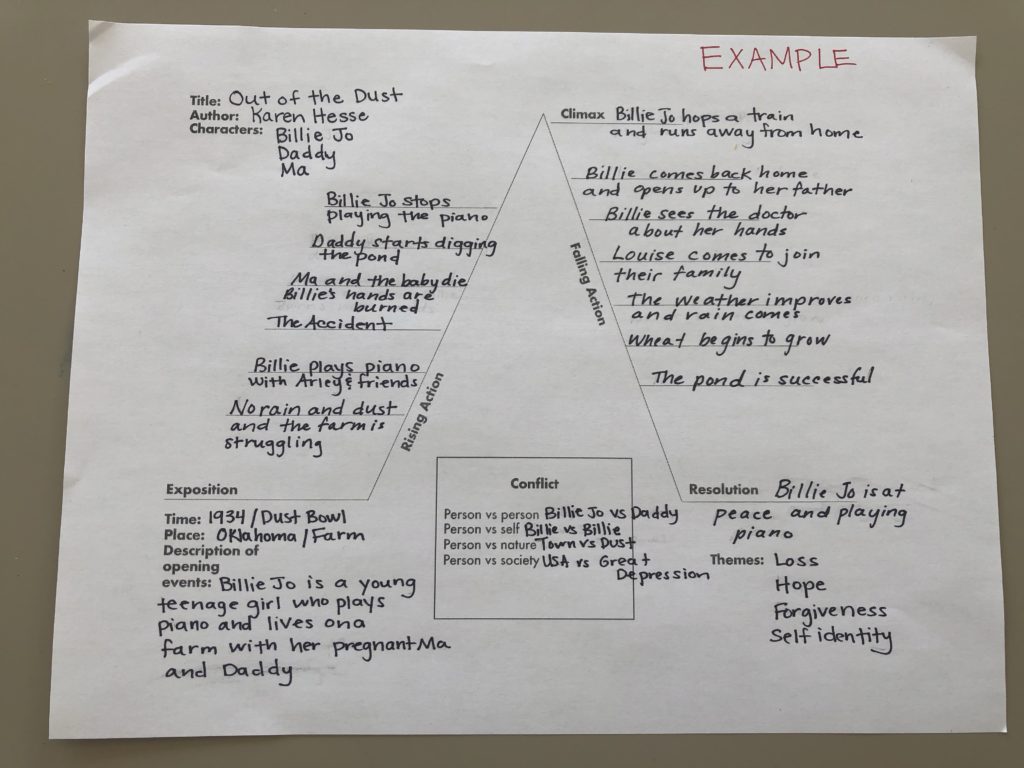
All of these activities are FREE and available for download below.
Please refer to my Terms and Conditions page for information regarding copyright and personal use of my resources. For more literature and writing activities, please visit my Teachers Pay Teachers store, The Extra School Mom.
